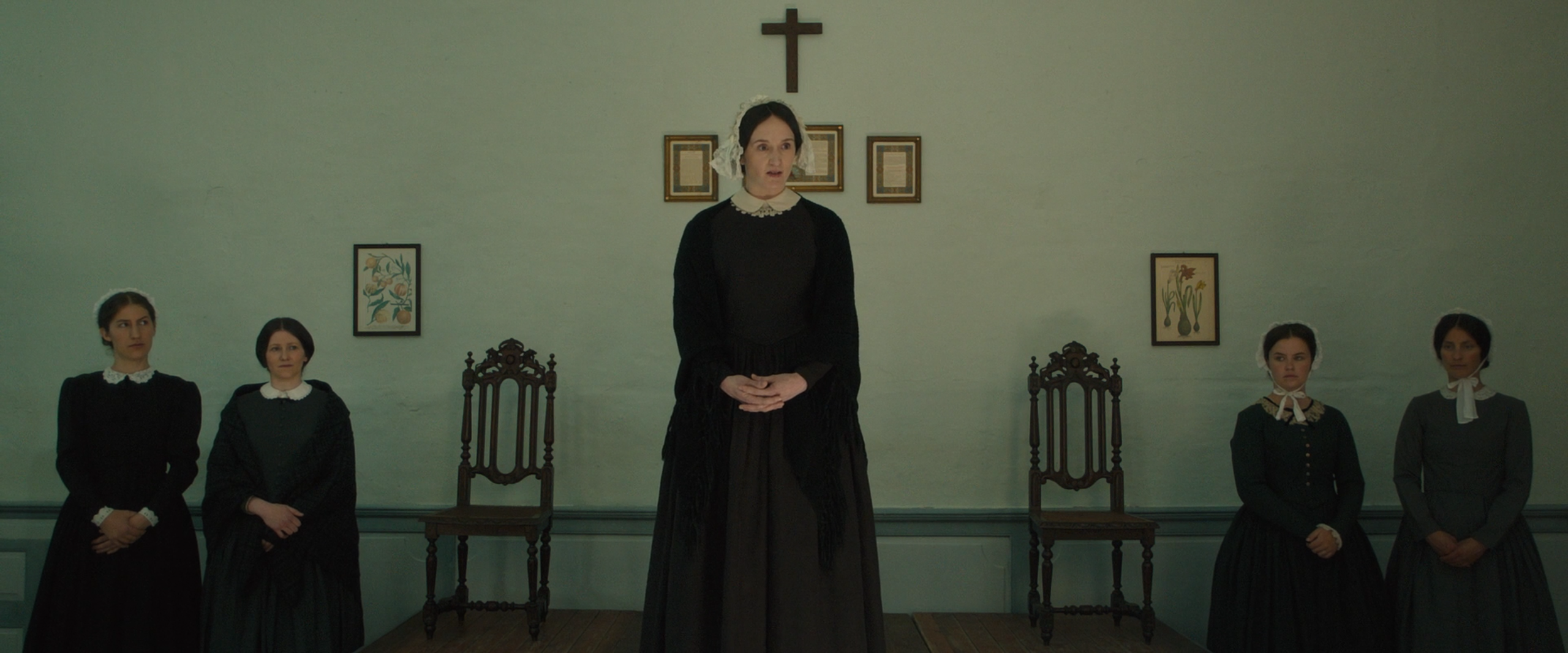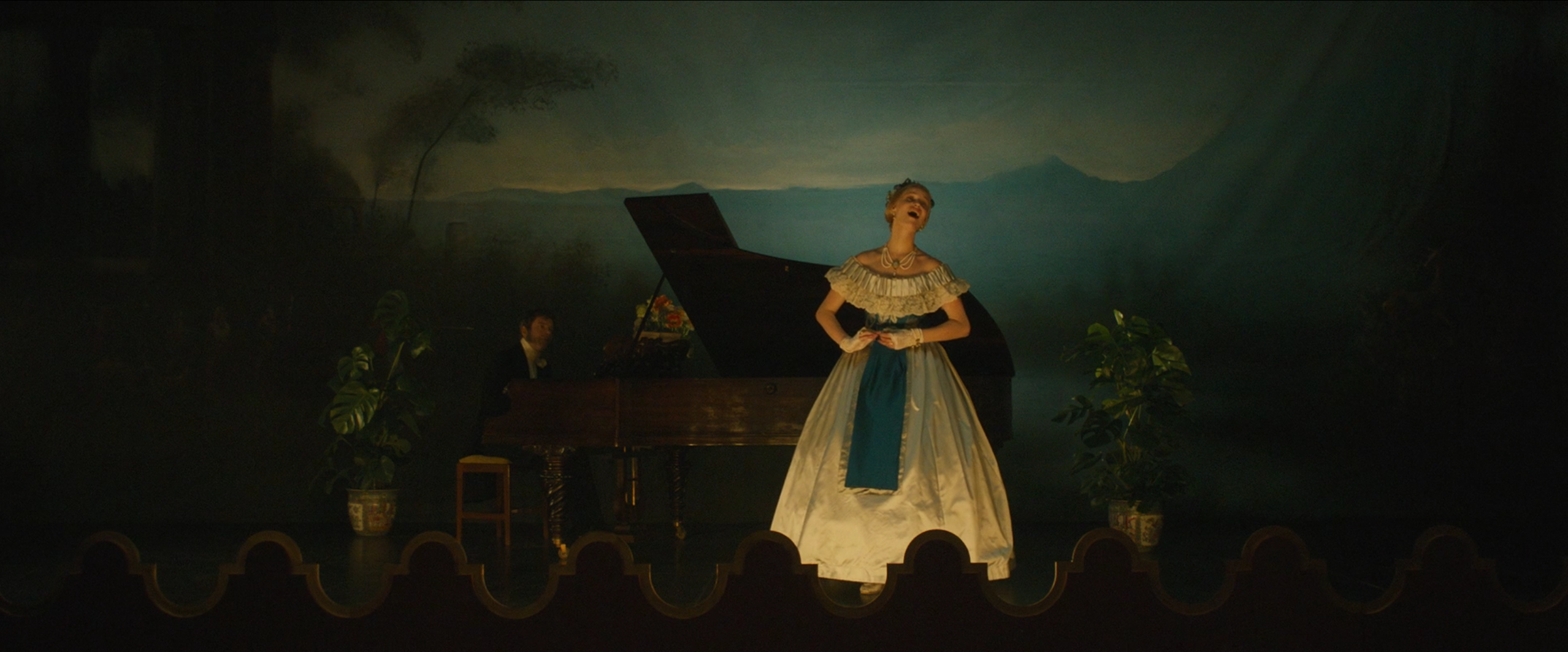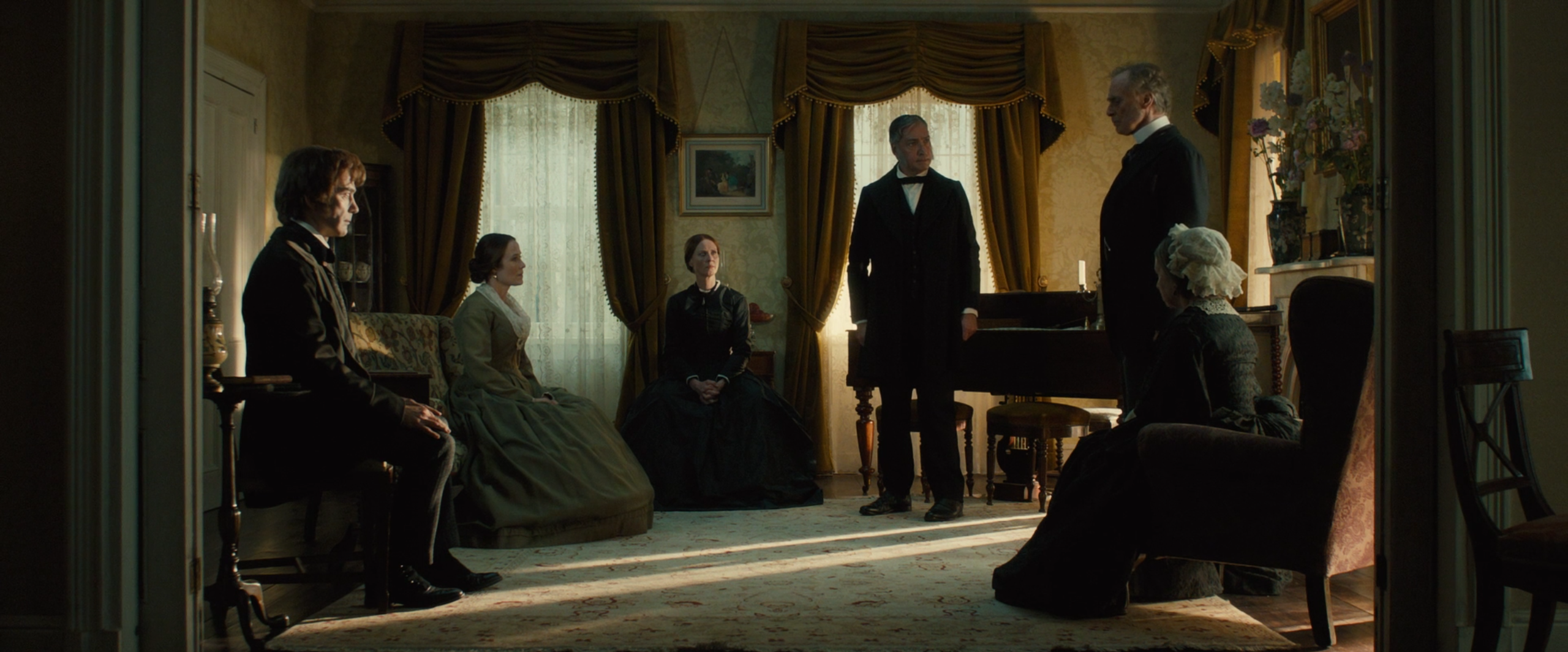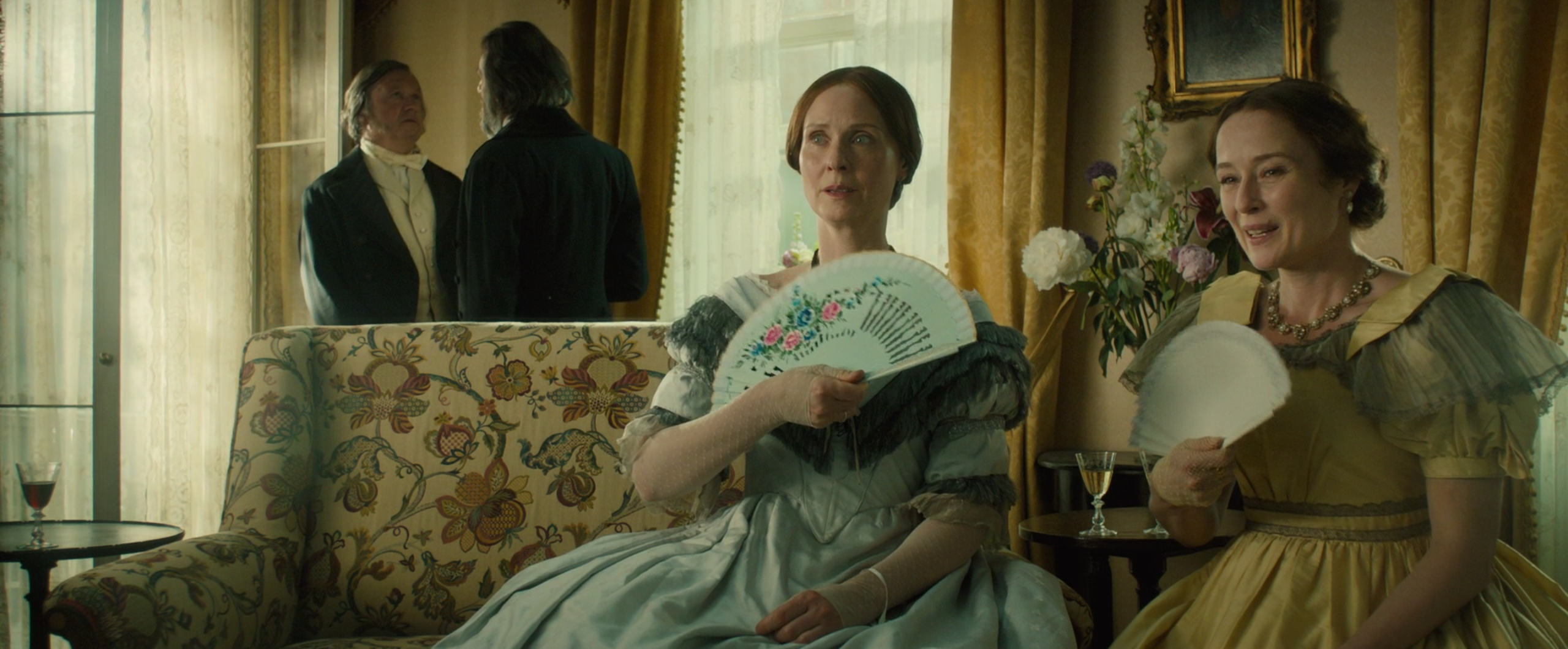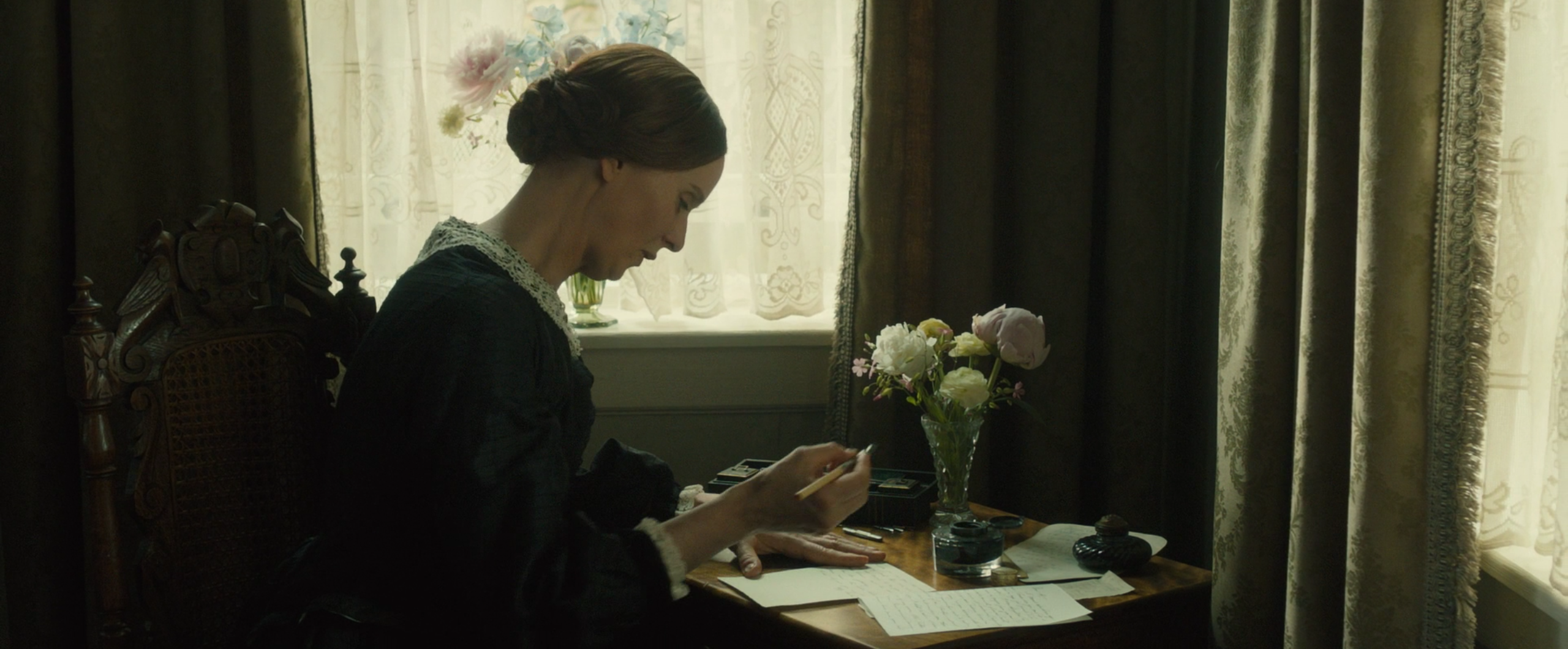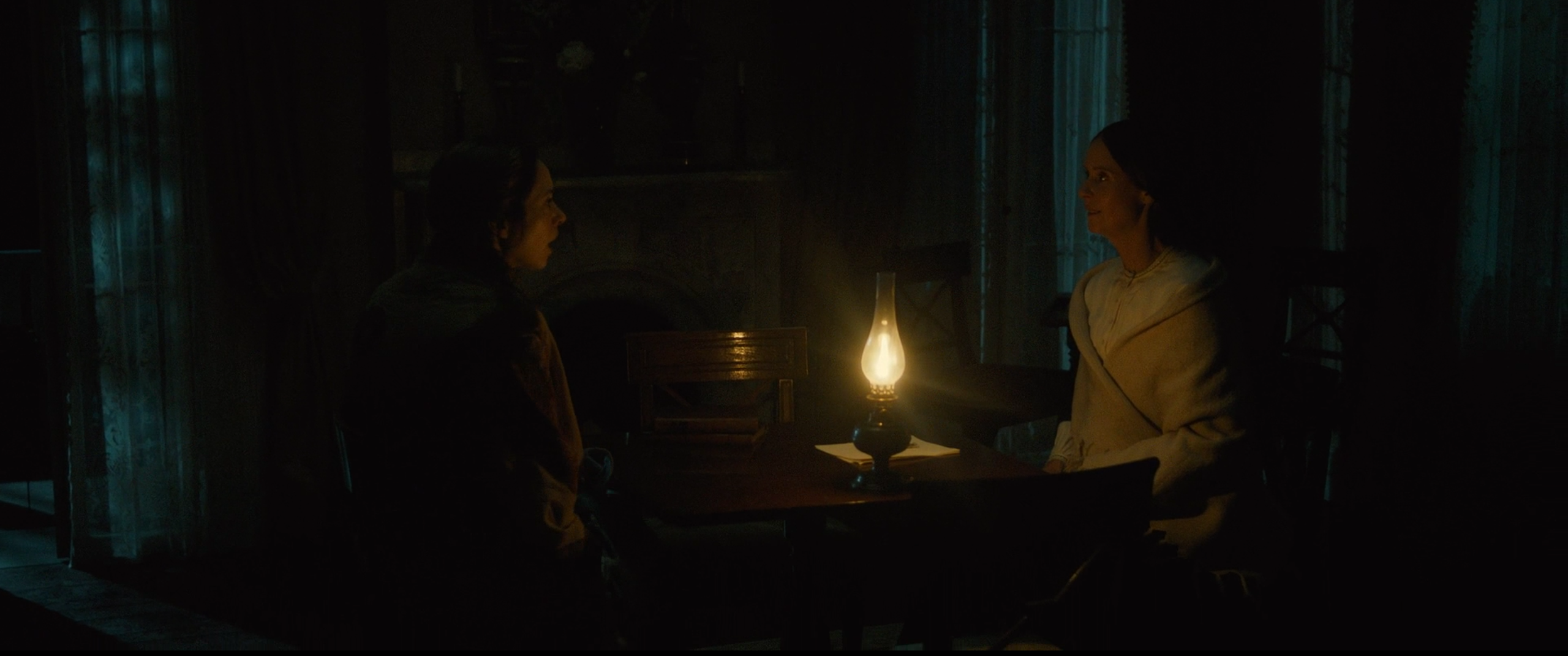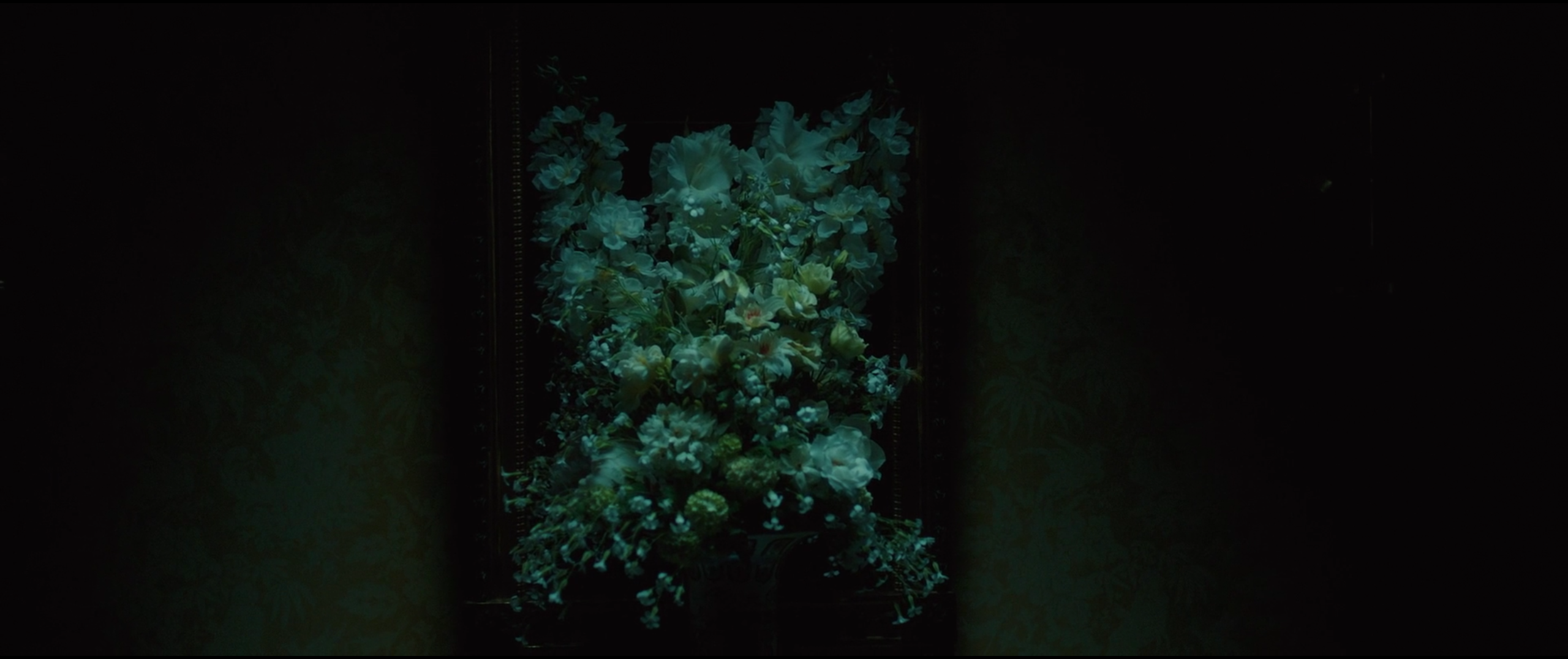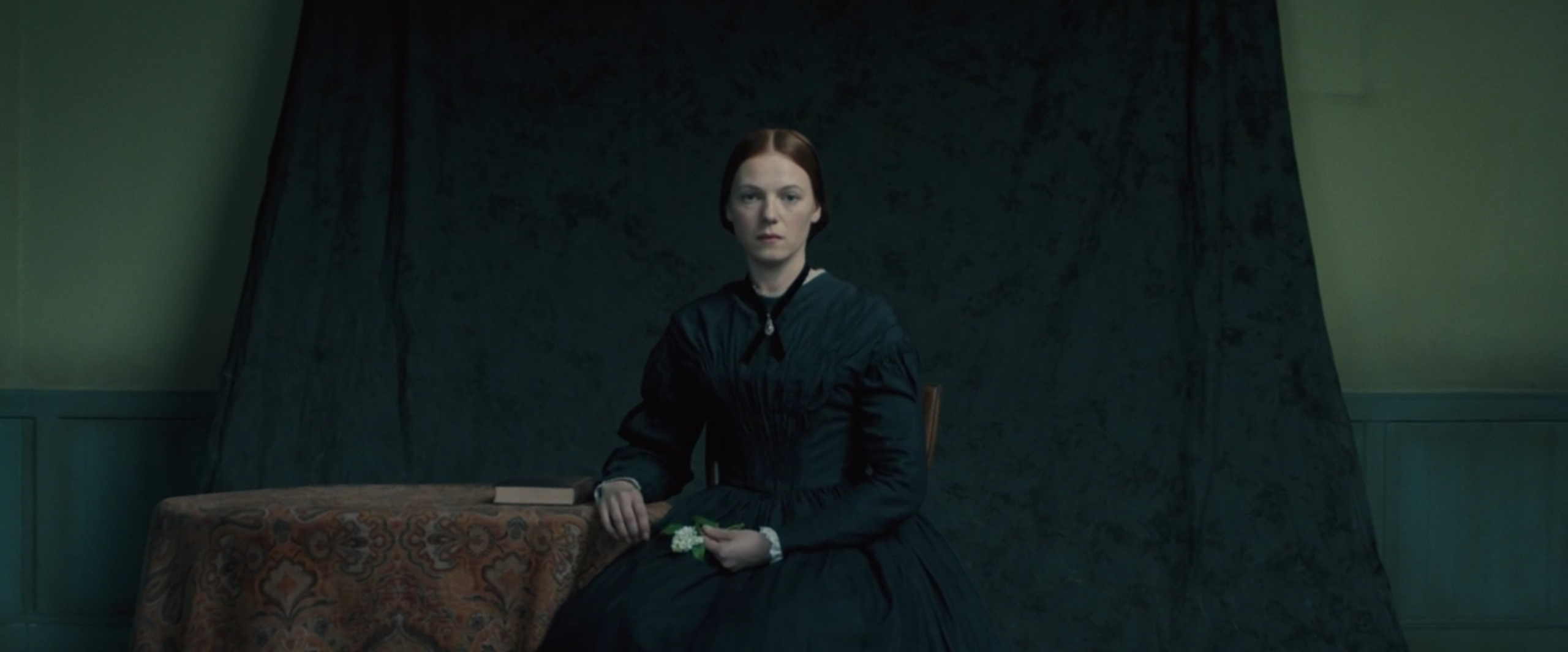"The Furniture" is our weekly series on Production Design. You can click on the images to see them in magnified detail.
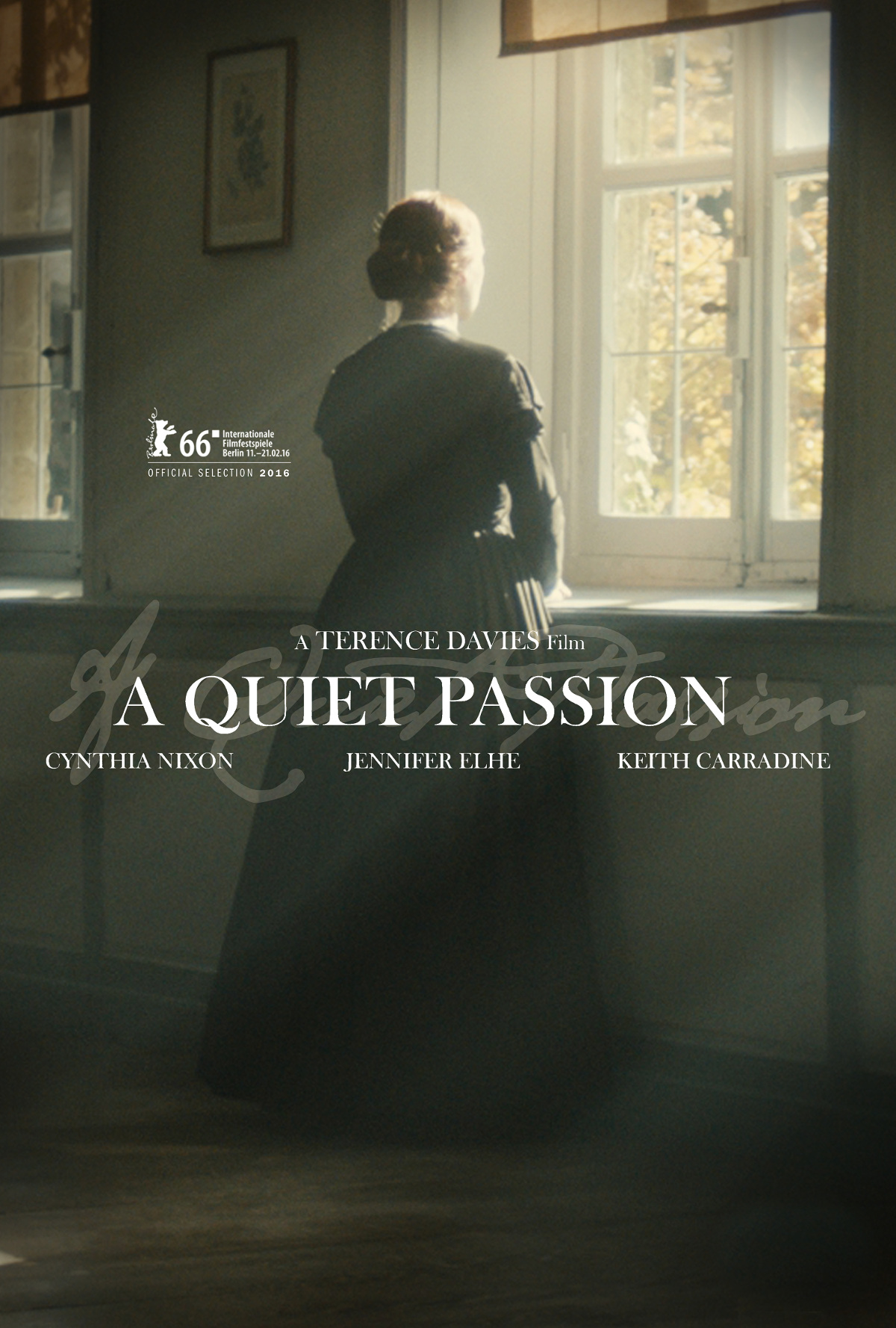 If you know one thing about the life of Emily Dickinson, it’s probably that she was a recluse. She spent the last years of her life cooped up in her Massachusetts home. Very few of her 1,800 poems were published during her lifetime. Up until very recently, only one picture of her was known to exist.
If you know one thing about the life of Emily Dickinson, it’s probably that she was a recluse. She spent the last years of her life cooped up in her Massachusetts home. Very few of her 1,800 poems were published during her lifetime. Up until very recently, only one picture of her was known to exist.
Yet she is now recognized as the most important American poet of the 19th century. That her universally resonant voice emerged from such isolation has seemed miraculous. A Quiet Passion peers into this conundrum and finds some strikingly poetic answers.
Unsurprisingly, the key to understanding is found in her house. Cynthia Nixon gives a brilliant performance, but the difference between Terence Davies’s film and lesser biopics is that she is not left to fend for herself. The work of production designer Merijn Sep and set decorator Ilse Willocx is crucial...
The trick is to illustrate her retreat into seclusion without softening an ounce of the inspiration she finds within these walls. Davies achieves this by beginning the film elsewhere.
The first shots of A Quiet Passion rigidly present the Mount Holyoke Seminary for Women, where Dickinson studied in her youth. The headmistress admonishes her pupils from a small raised platform. Behind her is a rigid hierarchy, the cross raised above three small framed religious texts. Beneath are two chairs, cushionless and crowned by the stern knobs of the 18th century. Two floral prints demonstrate natural beauty in its rightful place, adequately framed and not too big.
The young Dickinson (Emma Bell) is rescued by her family, who take her on a brief trip to Boston. They attend a theatrical recital, where they are treated to a rendition of the mad scene from La Sonnambula. Her father doesn’t approve, but Dickinson loves it. The backdrop resembles a Hudson River School painting, suggesting unbridled natural beauty. The potted plants allow it to jump out even further.
With these two opposite poles established, A Quiet Passion arrives at the Dickinson house. It’s small but its rooms are spacious, decorated to showcase a modest prominence. It can feel quite severe, particularly in moments of prayer.
Yet it is full of lovely things, colorful upholstery and ever-replenished flowerpots. When the light shines brightly through the flowing curtains, it can approach joy.
It is from here that Dickinson can conceive the entire world. One of the poems read in voiceover is drawn from this poetic vision. Take a moment to read it.
She writes this, and other poems, from her desk upstairs. It sits between two windows, through which she can observe the changing seasons. She keeps a little vase of flowers on the sill and on the desk. Her chair is the most charismatic in the house, depicting birds on its rear. Even from this small corner, Dickinson has full access to sun, summer and the heaven of god.
She often writes in the dead of night, her page illuminated by a single lamp. Yet even then, the world makes its presence known through the blue tones of moonlight that peer through the thin curtains.
Dickinson’s spirit invites fantasies into this simple house. In the film’s most breathtaking sequence, Emily sits alone upstairs. Davies plays a new orchestration of Thomas Ford’s hauntingly beautiful “Since First I Saw Your Face.” In the darkness, a man approaches the house. He is but a willowy symbol within Dickinson’s mind, his identity obscured by shadow. As the camera follows his eyeless gaze up the stairs toward her room, it passes by an alcove stuffed with white flowers. Is this death come to call, the flowers a suggestion of a funeral?
Perhaps. But there are flowers throughout the film, and they do not always suggest the same things. They are another form of visual punctuation, a concept so crucial to Dickinson’s poetry. But it is not just dashes. A Quiet Passion beautifully echoes the poet’s precision in all things. It approaches the iconic in Dickinson’s portrait, to which she has added a table and book. Her reticent spirit is neither mad nor hermitlike. She simply knows exactly how she wants to be seen.
